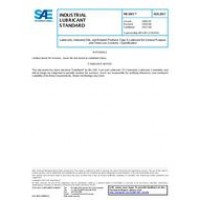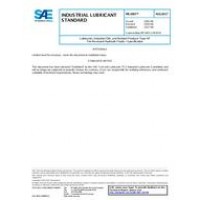This test method provides performance data on candidate insulation systems as a function of time and temperature. These data give engineering information on the wire insulation candidate relative to the performance of materials already in use with a backlog of experience. These tests expose candidate insulation systems to a wide range of temperatures for short and long periods of time, while measuring the degradation of its physical properties. For aerospace use, end-point proof tests include mandrel bend, water soak, and dielectric integrity.The thermal rating of an insulation system describes the quantitative relation of life of an insulation system to the temperature and time of exposure. The end of life is defined by the mechanical/electrical loss of integrity of the insulation system after exposure. A Temperature Index (TI) is then assigned based on temperatures and times recorded during the test. It should be noted that the Index is based upon the time at which 50% of the samples have failed. A related quantity is Relative Temperature Index (RTI) and is obtained when a candidate insulation system is simultaneously tested with a known insulation system using identical conditions (e.g., same temperatures, time intervals, and oven). RTI has been found to be more meaningful than TI since it is less affected by the variations in test conditions and procedures.Also included in this document is an extensive appendix to assist the user in performing and interpreting this test. Included in the appendix is an example which provides greater detail for those who have not previously run this test. This type of detail is not included in any of the referenced documents.This test method serves several purposes. Initial qualification of new aerospace wires to specifications for both commercial and military users may be established by using the TI and RTI. Also, it provides engineering information data for assigning operating or rating temperatures for a specific insulated wire.The high temperature test may be used to statistically compare the thermal performance data of a lot of wire with the original test data. The high temperature test is not recommended for use in continuing production quality control procedures until empirical evidence shows that the high temperature test or another analytical procedure, such as a thermogravemetric test, can accurately provide quality control testing information.This test method is primarily based on the degradation of the wire insulation, which tends to follow the Arrhenius relationship with respect to time and temperature. This test method, however, does not address, in and of itself, all mechanisms which may occur to degrade the insulation, nor does it imply that all degradation follow this relationship.
 PDF
PDF
All of our standards document are available in PDF (Portable Document Format), an electronic, downloadable format.You will be able to download the file in your account downloads.
 Multi-User Access
Multi-User Access
After purchasing, you have the ability to assign each license to a specific user.
 Printable
Printable
At any time, you are permitted to make printed copies for your and your members' reference use.
 PDF
PDF
 Multi-User Access
Multi-User Access
 Printable
Printable





